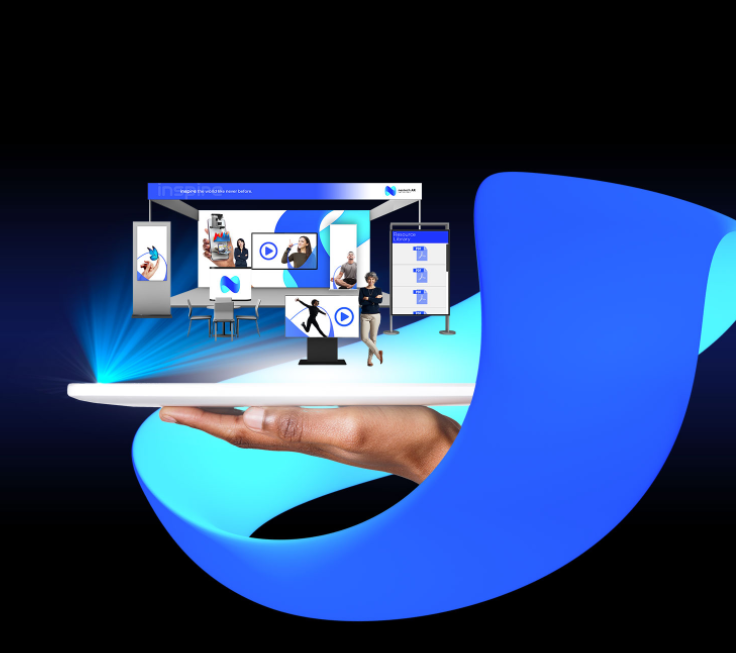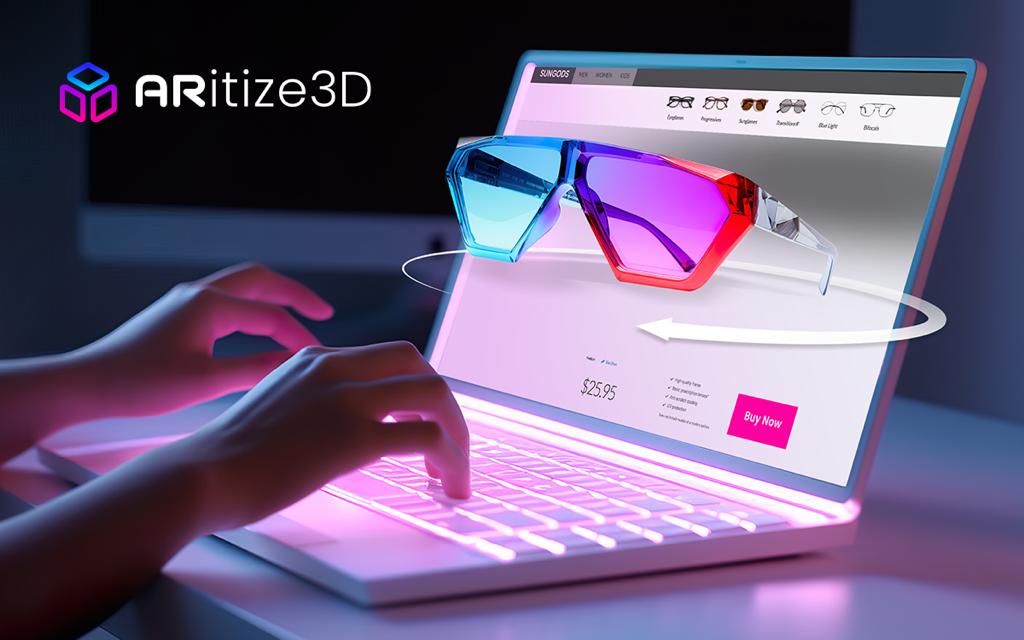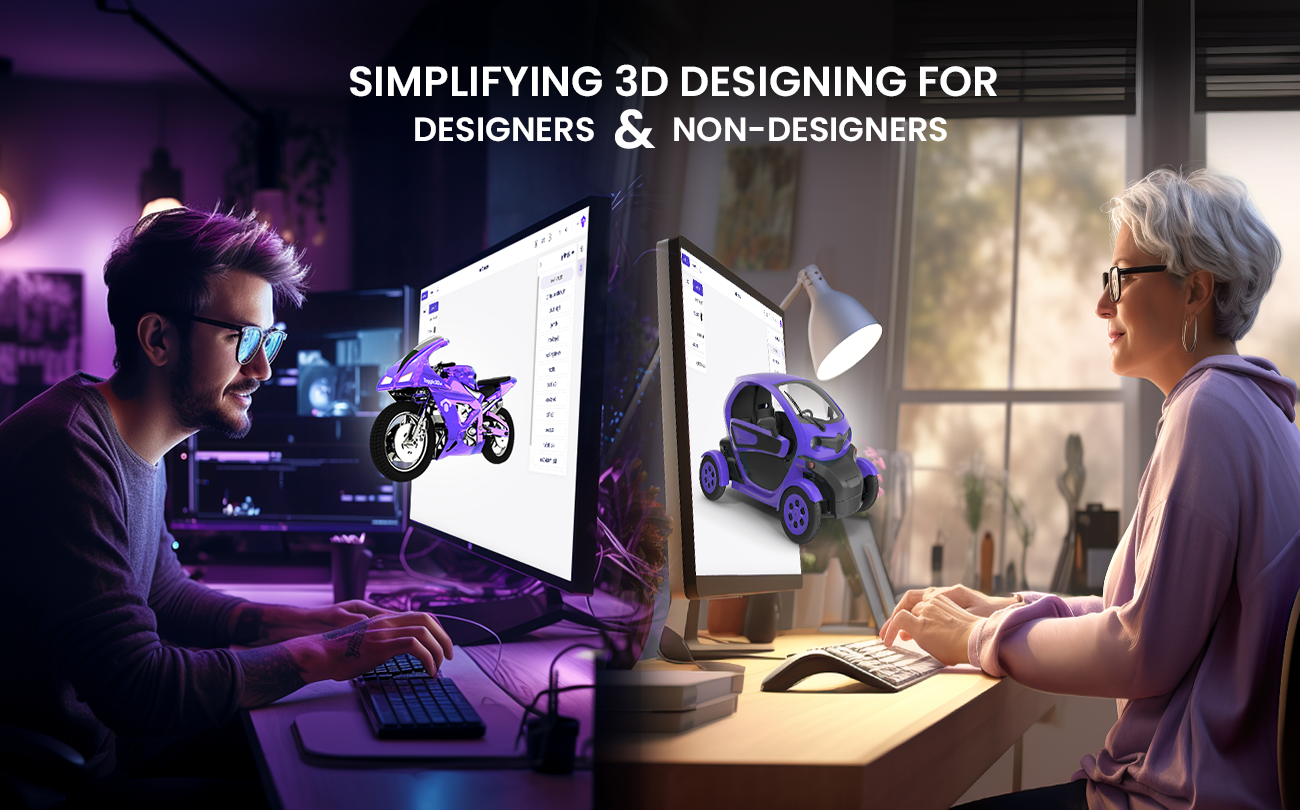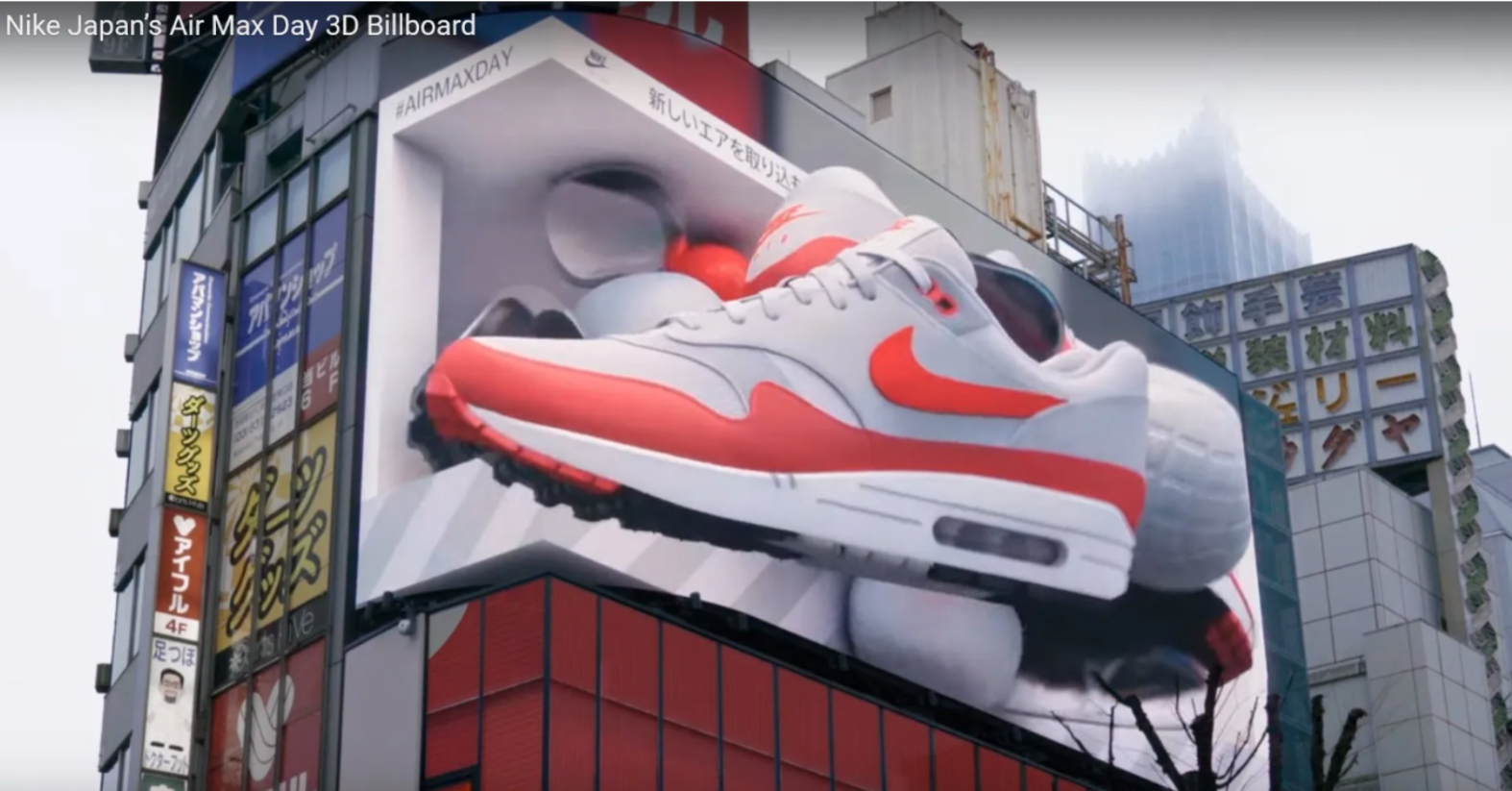So far, most ecommerce websites have been showcasing their products in 2D, through a series of photos from different angles – not because 2D is better, but because 3D modeling has been expensive and insufficiently photo-realistic. Well… not anymore! Thanks to the breakthroughs in 3D modeling, AR, VR, AI technology and companies like Nextech3D.ai – 3D ecommerce is changing the game for good. Ecommerce websites can now offer visitors an in-store-like immersive viewing experience by showcasing realistic 3D models of products in augmented reality (AR). This has led to increased customer engagement, higher conversion rates, larger orders on average, and significantly reduced returns.
To create a 3D model for ecommerce, companies usually hire in-house or freelance 3D modeling and texturing artists who are trained to use a 3D model maker online or offline. Let’s see how these artists build 3D models of products from scratch.
The Standard Procedure to Create a 3D Model for Ecommerce
These are the steps most 3D modeling and texturing artists take to create product models for 3D ecommerce websites:
1. Collecting the resources required for reference
To create a 3D model of a product, a 3D model creator requires resources like the actual product along with a 3D scanner or photographs or CAD/STEP/STL files of the product. They also require a physical sample of its surface or real-world objects that have the desired surfaces, which they can scan to create digital replicas. An accurate texture from the stock materials available in online libraries and modeling software can work, too. Otherwise, the 3D texturing artist has to manually create surfaces from scratch and then scan them for use in the digital model.
2. Creating the basic 3D model of the product
The resources gathered for reference determine the method by which the artist creates a 3D model. They can scan the physical product or upload photographs or CAD/STEP/STL files into their offline or online 3D modeling software to create the precise geometrical structure of the product in 3D. It usually involves a photogrammetry tool that matches the reference points on the product or its photographs to a digital, 3D coordinate system and stitches them with a mesh framework made of basic polygons like triangles. Creating the 3D model from scratch is also an option, but a rather tedious one that can lead to inaccuracies. It also requires very detailed product descriptions. Once the basic 3D model is ready, the modeling artist then adds contours to refine its framework and closely match it with the physical product.
3. Adding surface properties to the 3D model
Surface properties include colors, shades, materials, textures, and finishes. It is generally the job of a specially skilled 3D texturing artist to impart surface properties to a 3D model designed by a modeling artist. The 3D texturing process consists of 2 main steps: UV mapping & materialing. UV mapping is the process of unwrapping a 3D model into its flat surface or 2D representation, which is called a UV map. Materialing is the process in which the 3D texturing artist adds the required surface properties to the UV map of the 3D model. Here too, the resources they have for reference determine the method of texturing.
4. Lighting and rendering the final 3D model
Lighting gives a product’s digital, 3D model its shadows and shine and adds a sense of realism to it. Once the background is set and the lighting is done, you get a good sense of how the model’s real-world counterpart would look. After that, the 3D model is ready to be rendered and exported in a VR/AR- and web-friendly file format for seamless integration into a 3D ecommerce website.
The New-Age 3D Model Creator for Ecommerce – ARitize3D
It’s now possible to skip the long, tedious process of creating 3D models one by one with the help of a powerful 3D model creator - ARitize3D. ARitize3D is an end-to-end 3D modeling service by Nextech3D.ai, a trailblazing company that specializes in creating different kinds of AR experiences by leveraging patented AI technology.
Here is how the service works:
-
Provide your dedicated ARitize3D project manager the URLs to the web pages of the ecommerce products that need to be ‘ARitized’.
-
The ARitize3D team will extract all the required product images and details from those web pages and create high-quality and photo-realistic 3D models for you to review.
-
You’ll be given access to an intuitive CMS dashboard to review the created models and provide your valuable feedback.
-
Once the 3D models are aligned with your preferences, the ARitize3D team will integrate the 3D models into their respective product web pages or simply deliver the 3D models to you in an easy-to-integrate, web-friendly format.
-
ARitize3D can even generate product photography and videography in lifelike 3D for your products.
ARitize3D eliminates the need to hire - 3D modeling and texturing artists, and buy multiple software packages to create a 3D model for ecommerce. At present, it is the easiest and fastest way to ‘ARitize’ ecommerce products at scale.
Benefits of Using ARitize3D to Build 3D Models
Here are the various perks of signing up for ARitize3D as you foray into the world of 3D ecommerce:
-
3D modelers and texturing artists usually take around 50-100 hours to create and texture a single 3D model. ARitize3D, on the other hand, can deliver scalable 3D models at record speed.
-
No other service or software offers 3D as well as AR Google Display Ads for eye-catching product marketing campaigns.
-
ARitize3D promises flawless integration of the 3D/AR models into ecommerce web pages and apps without affecting their compatibility with various devices.
-
Ecommerce businesses need not hire skilled personnel or purchase different tools for 3D modeling, texturing, lighting, and web integration as ARitize3D is an end-to-end service.
-
The service can even generate photo-realistic, high-resolution, and professional imagery and videography of ecommerce products in 3D.
-
Easy access to a personalized CMS makes your team’s feedback process dramatically convenient.
-
For quick and easy AR viewing, ARitize3D integrates 3D/AR buttons into the product’s web page.
-
You can customize the color and style of these 3D/AR buttons anytime so that the look and feel of your 3D ecommerce website stays consistent.
-
ARitize3D offers dedicated project managers and delivery excellence managers to ensure that a project is seamlessly executed from start to end.
-
Complimentary technical support is provided by ARitize3D so you can rest assured you’ll have someone to hold your hand and guide you through the entire process.
-
Moreover, ARitize3D provides access to helpful analytics and insights that highlight your top-performing models and categories, the total views an AR model got in a specific period, and details of the gadgets used for AR viewing. You can therefore easily gauge the effectiveness of your 3D ecommerce experience.
-
ARitize3D is an exceptionally economical service for small and large ecommerce companies alike.
The above benefits make ARitize3D the ideal choice to be an ecommerce platform’s go-to 3D model creator for their entire catalog. To learn more about ARitize3D and its pricing models, just click here. This is your shortcut to 3D ecommerce that doesn’t compromise on quality.
Features of a High-Quality 3D Model for Ecommerce
Now that we’ve covered the how-tos of creating a 3D model for ecommerce, let us see the characteristics that differentiate professional 3D models from amateur ones.
1. Visual Accuracy
The 3D model should be identical to the product in the reference photos. There should be no difference between the model’s and the actual product’s measurements.
2. Mesh Quality
Quad meshes make finer 3D models than triangular meshes. There shouldn’t be any black polygons in a mesh as they are a sign of a mistake in the modeling process, such as the overlapping of two surfaces.
3. Material Quality
The materials assigned to various components of the 3D model should look identical to the product’s photographs and have all the product’s nuances and subtleties, e.g. the minute scratches on metal surfaces.
4. Polygon Count
It must be as low as possible, without affecting the product’s details.
The 3D model must conform to the polycount limits of the 3D ecommerce platform where it will appear.
5. UV Layout
All UV shells must be mapped onto one texture map only. They should be oriented in the 1:1 space without overlapping.
The UV seams must be placed on the 3D model’s natural boundaries.
6. Product Origin
The product’s geometrical origin should be centered at its base.
7. Exporting Practices
All individual components of the 3D model must be combined into a single object. All transformations should be frozen, and all history should be deleted.
8. Technical Requirements
The model must be compatible with the digital platform it is to be integrated with.
Common Problems in a 3D Model for Ecommerce
Avoiding these flaws in a 3D model is essential for an accurate, immersive, smooth, and satisfying AR/VR experience:
1. Incorrect Scale
This occurs when the 3D model doesn’t measure the same as the actual product.
2. Bad Geometry
This would imply that the model has geometrical errors like poor chamfering and smoothing, polygons with excess sides or duplicate polygons at the same location, interpenetration or clipping, and the existence of more than one UV set.
3. Unsealed Geometry
There are undetected holes and gaps in the geometry of the 3D model.
4. Inaccurate Materials
Materials that aren’t as reflective or transparent as those on the real product being added to the 3D model can gravely affect the end outcome.
5. Low-Quality Textures
The 3D model could appear blurred due to the use of low-resolution image files for surface textures.
6. Distorted UVs
Sometimes the logos and text on surfaces get stretched or compressed due to a lack of space on the 3D model that leads to distortion.
ARitize3D assures that all the quality standards of a product’s 3D model for ecommerce are met. Nextech3D.ai’s professional team makes sure no 3D model is flawed. That’s what makes the service more trusted than any generic 3D model maker online.
You can learn more about Nextech3D.ai’s products and services for ecommerce by clicking here.








